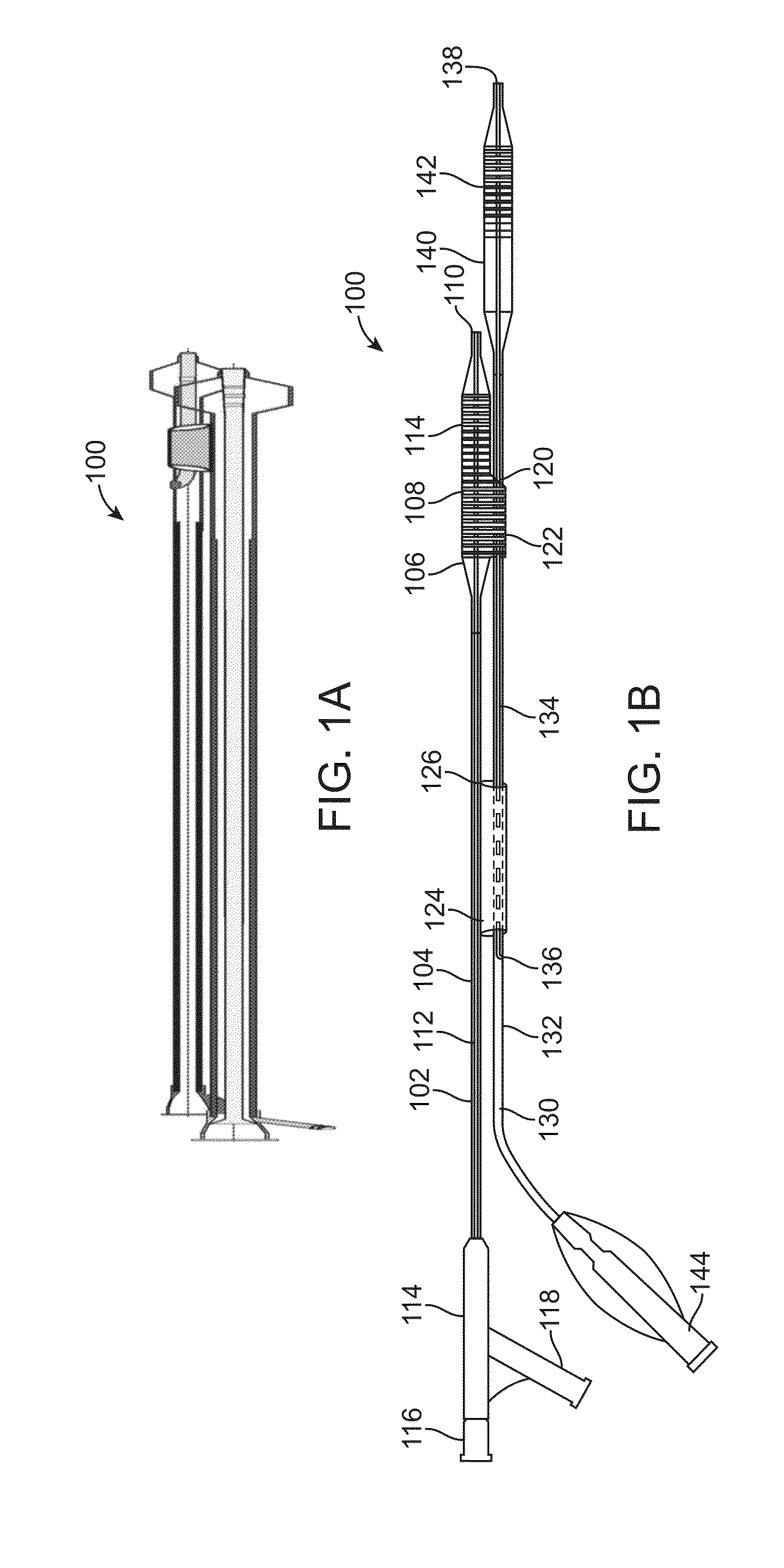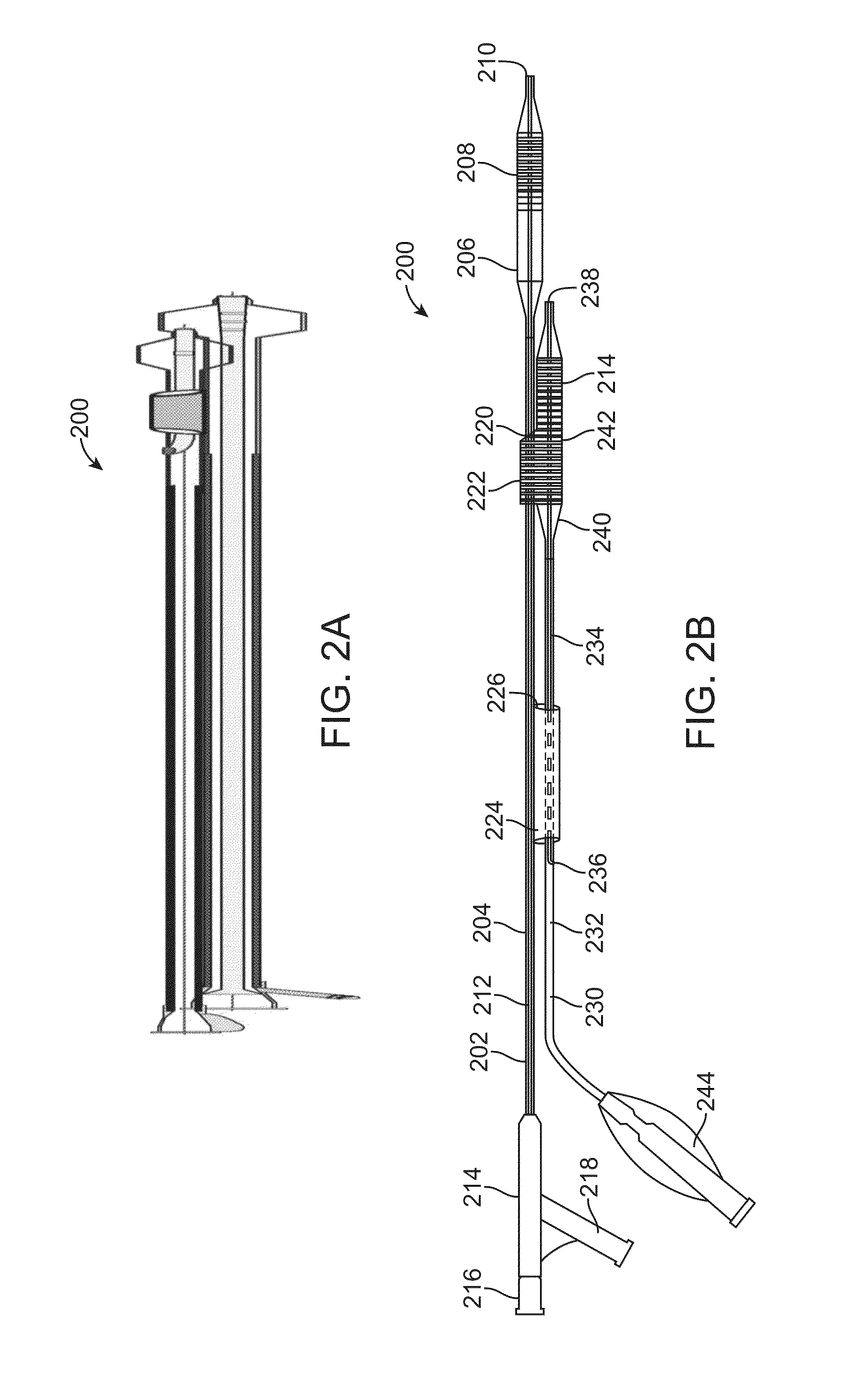Stent Alignment During Treatment of a Bifurcation
a bifurcation and stent technology, applied in the field of medical devices, can solve the problems of limited success rate, stents and connecting balloon catheter portions may obstruct the use of post-operative devices to treat a daughter vessel, and stents are not fully able to prevent in-stent restnosis (isr) or caused restnosis
- Summary
- Abstract
- Description
- Claims
- Application Information
AI Technical Summary
Benefits of technology
Problems solved by technology
Method used
Image
Examples
experiment # 1
Experiment #1
[0200]During animal testing, stent delivery systems similar to those illustrated in FIGS. 1A-1B, 2A-2B, 3A-3B, and 4A-4B were used to deliver a first stent into a side branch and a second stent into a main branch at a bifurcated vessel. After alignment of the proximal end of the side branch stent with the side hole of the main branch stent, the stents were radially expanded using methods described above. It was predicted that the stents would either overlap with one another, or the stent ends would butt up against one another, or a gap would exist between the two stents. However, an unexpected result was achieved. Under fluoroscopy, the proximal end of the side branch stent was observed to interdigitate with the side hole in the main branch, similar to FIG. 46A. This provided uniform and continuous scaffolding along the main branch across the bifurcation and into the side branch, without obstructing the ostium to the side branch.
[0201]Balloon Configurations:
[0202]The ba...
PUM
 Login to View More
Login to View More Abstract
Description
Claims
Application Information
 Login to View More
Login to View More - R&D
- Intellectual Property
- Life Sciences
- Materials
- Tech Scout
- Unparalleled Data Quality
- Higher Quality Content
- 60% Fewer Hallucinations
Browse by: Latest US Patents, China's latest patents, Technical Efficacy Thesaurus, Application Domain, Technology Topic, Popular Technical Reports.
© 2025 PatSnap. All rights reserved.Legal|Privacy policy|Modern Slavery Act Transparency Statement|Sitemap|About US| Contact US: help@patsnap.com



